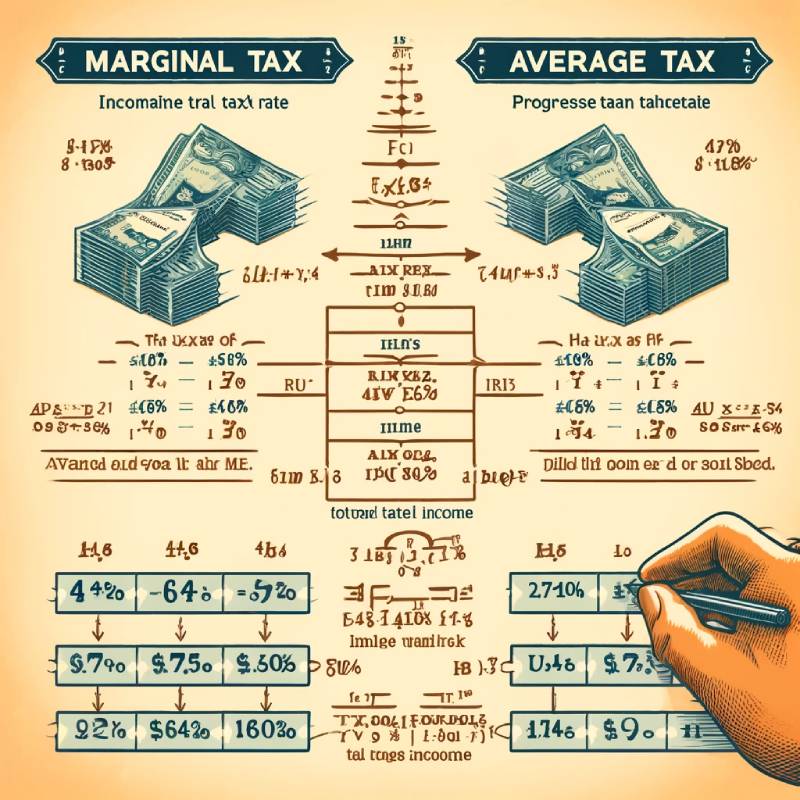The concepts of marginal and average tax rates in economics:
Marginal Tax Rate
The marginal tax rate is the rate at which your last dollar of income is taxed. This concept is most relevant in systems with progressive taxation, where tax rates increase as income rises. The marginal tax rate is important for decision-making and understanding the tax implications of earning additional income. For example, if your marginal tax rate is 30%, earning an additional $100 would result in $30 of that going to taxes.
Let’s say you’re trying to figure out the marginal tax rate on your income. Suppose the tax brackets are as follows:
– 10% on income up to $10,000
– 20% on income between $10,001 and $20,000
– 30% on income over $20,000
If your total income is $25,000, your marginal tax rate is 30% because that’s the rate applied to your highest dollar of income.
This means that any additional dollar you earn over $25,000 will be taxed at 30%.
Average Tax Rate
The average tax rate is the total amount of taxes paid divided by total income, expressed as a percentage. This rate gives you an overall picture of what portion of your income went to pay taxes. If you paid $15,000 in taxes on an income of $75,000, your average tax rate would be 20%.
To calculate the average tax rate, you divide the total taxes paid by the total income. Continuing with the example above, let’s calculate the taxes owed at each bracket:
1. 10% on the first $10,000 = $1,000
2. 20% on the next $10,000 = $2,000 ($20,000 – $10,000 = $10,000)
3. 30% on the remaining $5,000 = $1,500 ($25,000 – $20,000 = $5,000)
Total taxes paid would be:
$1,000 + $2,000 + $1,500 = $4,500
The total income is $25,000, so the average tax rate would be:
\[\text{Average Tax Rate} = \frac{4500}{25000} = 0.18 = 18\%\]
This means that, on average, 18% of your income went to taxes.
Effective Tax Rate
While not initially mentioned, the effective tax rate is also a useful concept. It’s similar to the average tax rate but takes into consideration various deductions, credits, and exemptions that reduce taxable income. It’s a more accurate measure of the real percentage of your income paid in taxes.
Differences and Implications
– **Marginal Tax Rate:** Useful for understanding the tax impact of additional income. It’s crucial for tax planning and financial decision-making, especially in progressive tax systems.
– **Average Tax Rate:** Offers a broad overview of your tax burden. It’s helpful for budgeting and understanding your overall financial situation.
Understanding these rates can help individuals and businesses make informed decisions about investments, savings, and work. For example, knowing your marginal tax rate can inform you about the benefits of investing in a retirement account that offers tax deductions on contributions, as it effectively reduces your taxable income and possibly your marginal tax rate.

